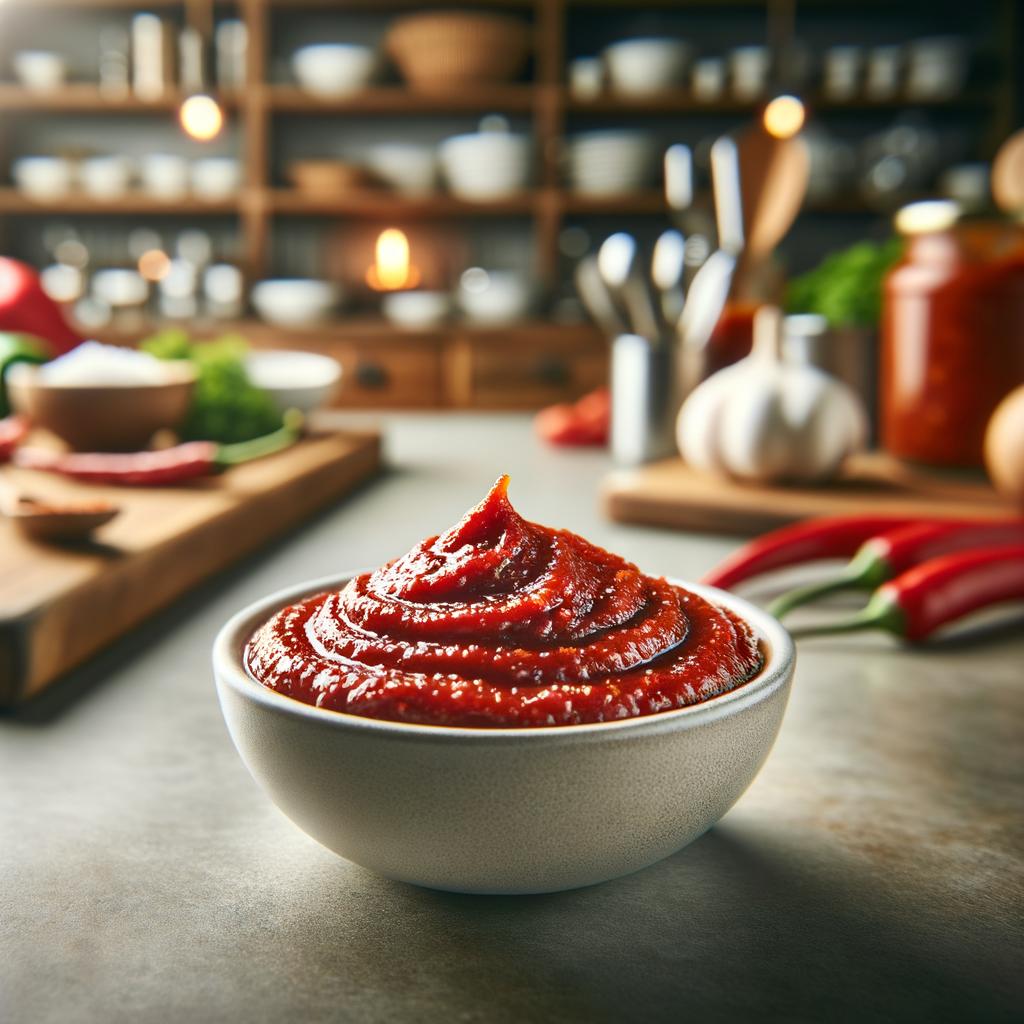Red Pepper Paste

Description
Red pepper paste, also known as Gochujang in Korea, is a vibrant and fiery ingredient that commands attention in any dish. Its appearance is a striking deep red, reminiscent of a fiery sunset, with a consistency that can range from a thick, hearty paste to a smoother, more liquid form. The flavor profile of red pepper paste is a complex symphony of sweet, spicy, and umami notes, with a slight hint of smoky undertones. What sets this ingredient apart from other similar ingredients like chili paste or tomato paste is its unique combination of heat, sweetness, and a deeply savory, almost meaty flavor that comes from the fermentation process.
Primary Uses
Red pepper paste is a cornerstone of Korean cuisine, commonly used in a wide array of dishes from Bibimbap (mixed rice bowl) to Tteokbokki (spicy rice cake). It is also a key component in marinades for meats, particularly in the famous Korean BBQ. Beyond its culinary uses, red pepper paste is believed to have medicinal properties in traditional Korean medicine, thought to improve metabolism and increase appetite.
History
The history of red pepper paste is deeply intertwined with that of Korean cuisine. Its origins can be traced back to the introduction of chili peppers to Korea in the 16th century from the New World. Over time, the Koreans began to ferment these peppers, creating the first versions of what we now know as red pepper paste. This ingredient has been a staple in Korean kitchens for centuries, its popularity enduring through generations. An interesting folklore associated with red pepper paste is that Korean mothers would prepare their own homemade paste when their daughter gets married, symbolizing the passing down of culinary traditions.
Nutritional Information
Red pepper paste is not just a flavor powerhouse, but a nutritional powerhouse as well. It is rich in vitamins A and C, which are known for their antioxidant properties, and also contains capsaicin, a compound that has been linked to a variety of health benefits, including pain relief and weight loss. Compared to other similar ingredients, red pepper paste has a higher protein content due to the fermentation process, which also aids in digestion. However, it's important to note that it's high in sodium, so it should be consumed in moderation.
From its fiery hue to its complex flavor and rich history, red pepper paste is truly an ingredient that adds a dash of romance and intrigue to any dish.

